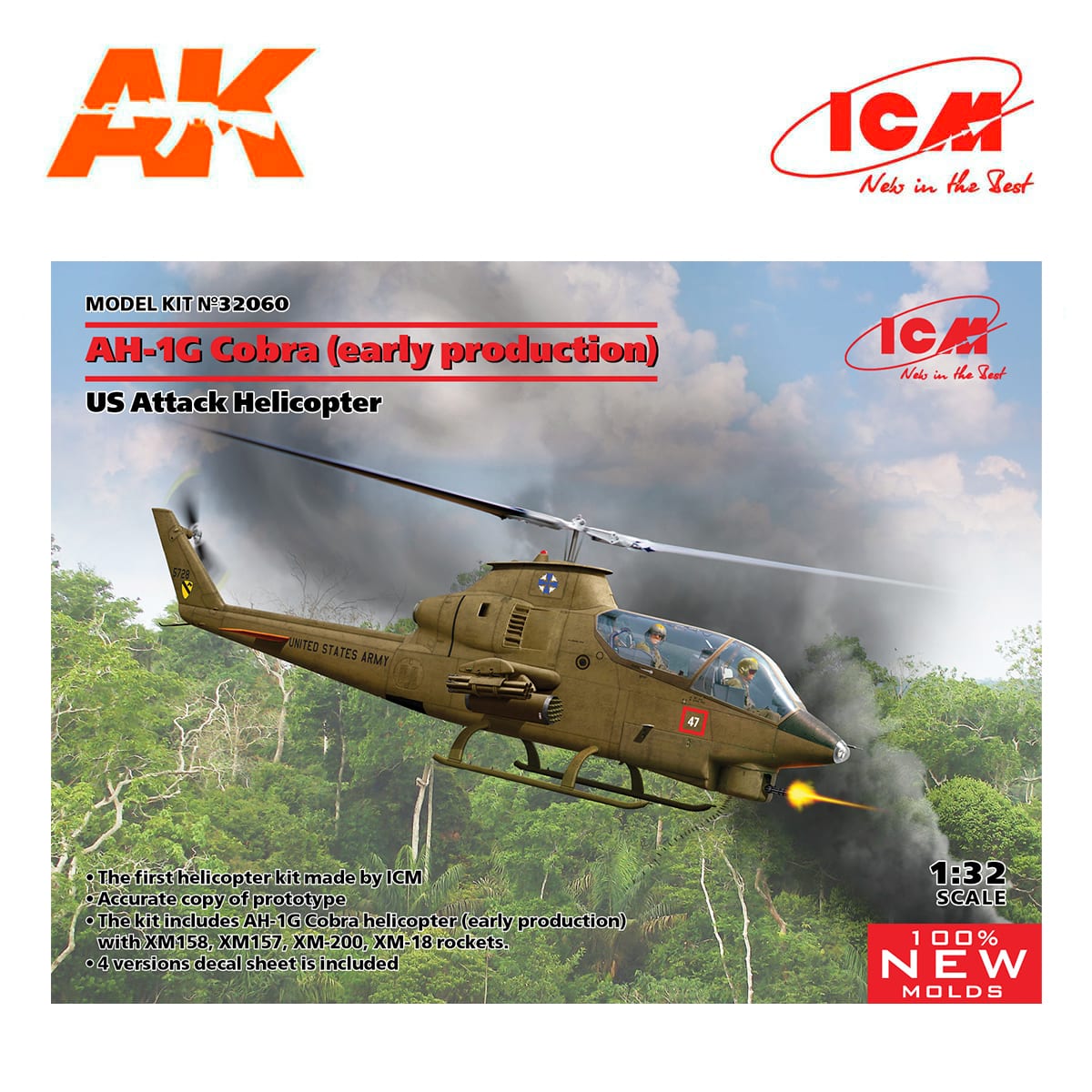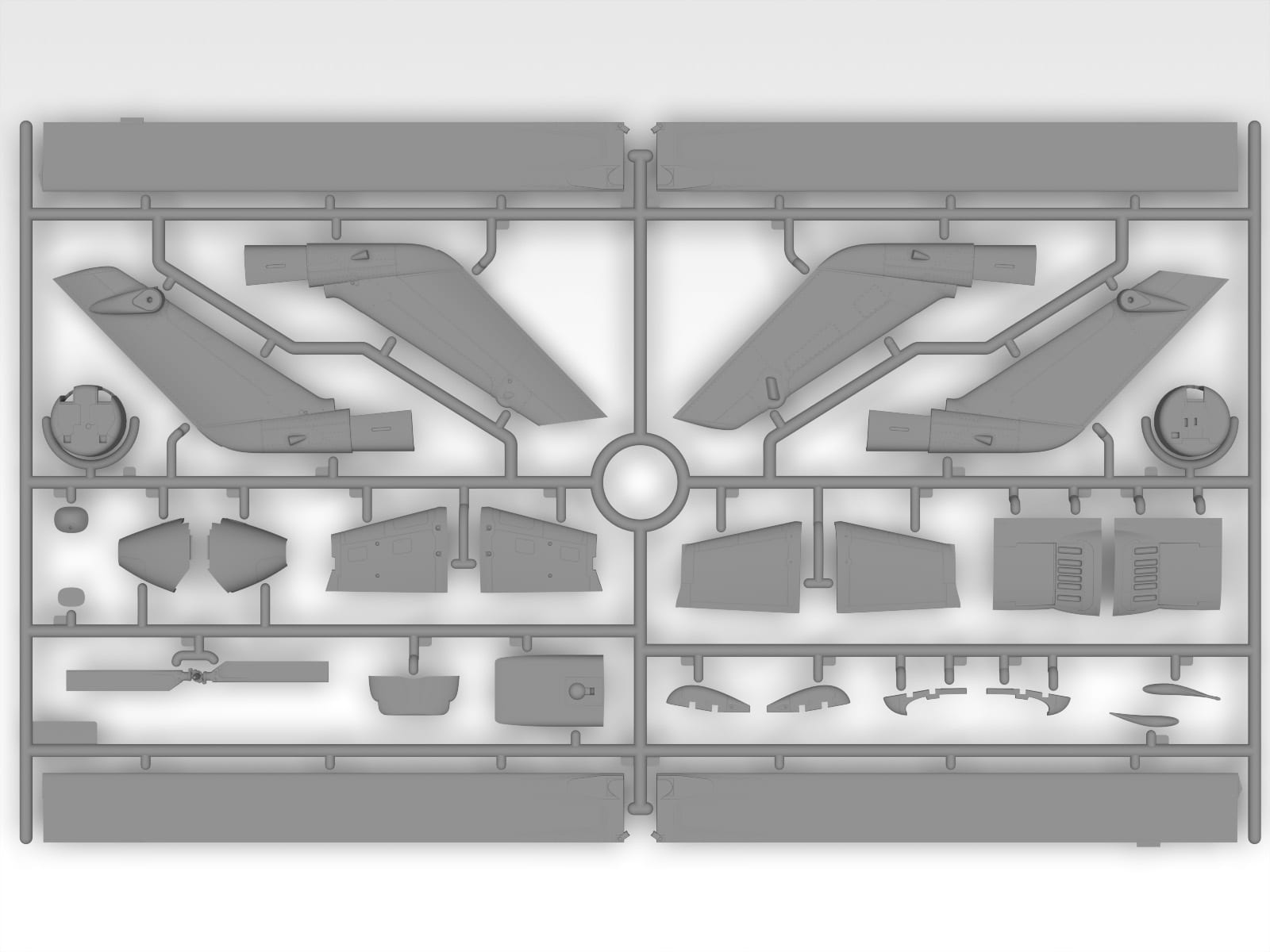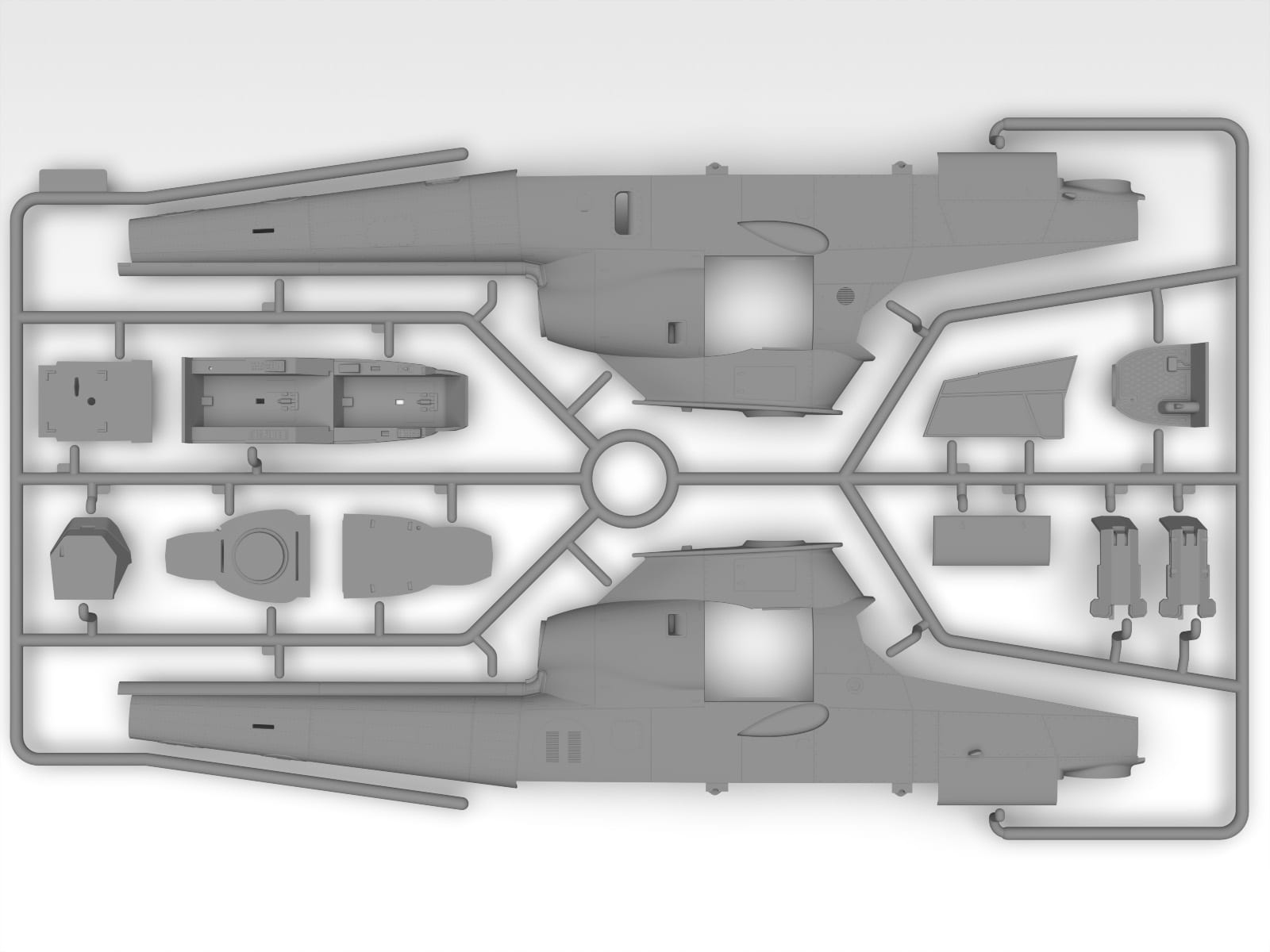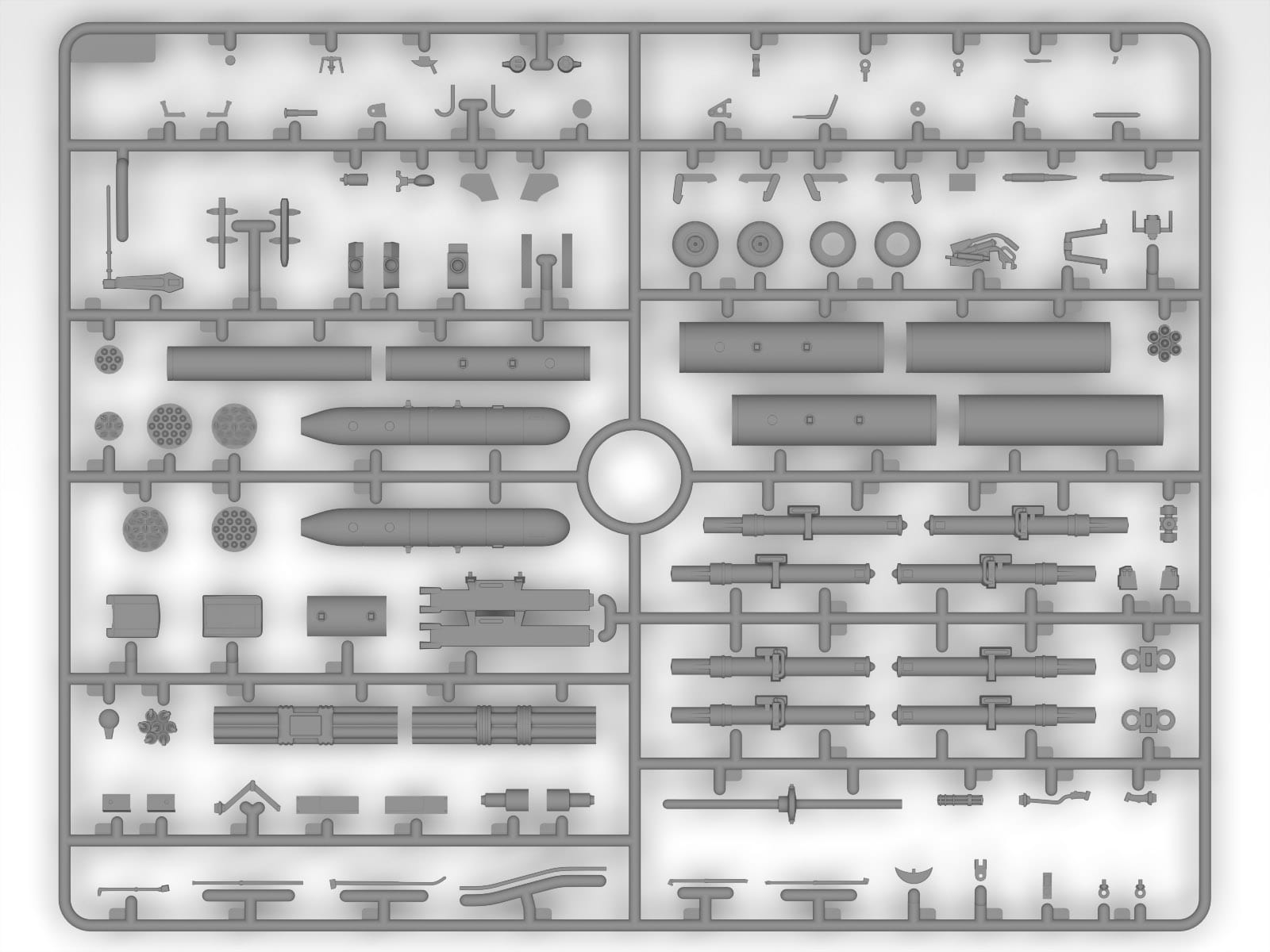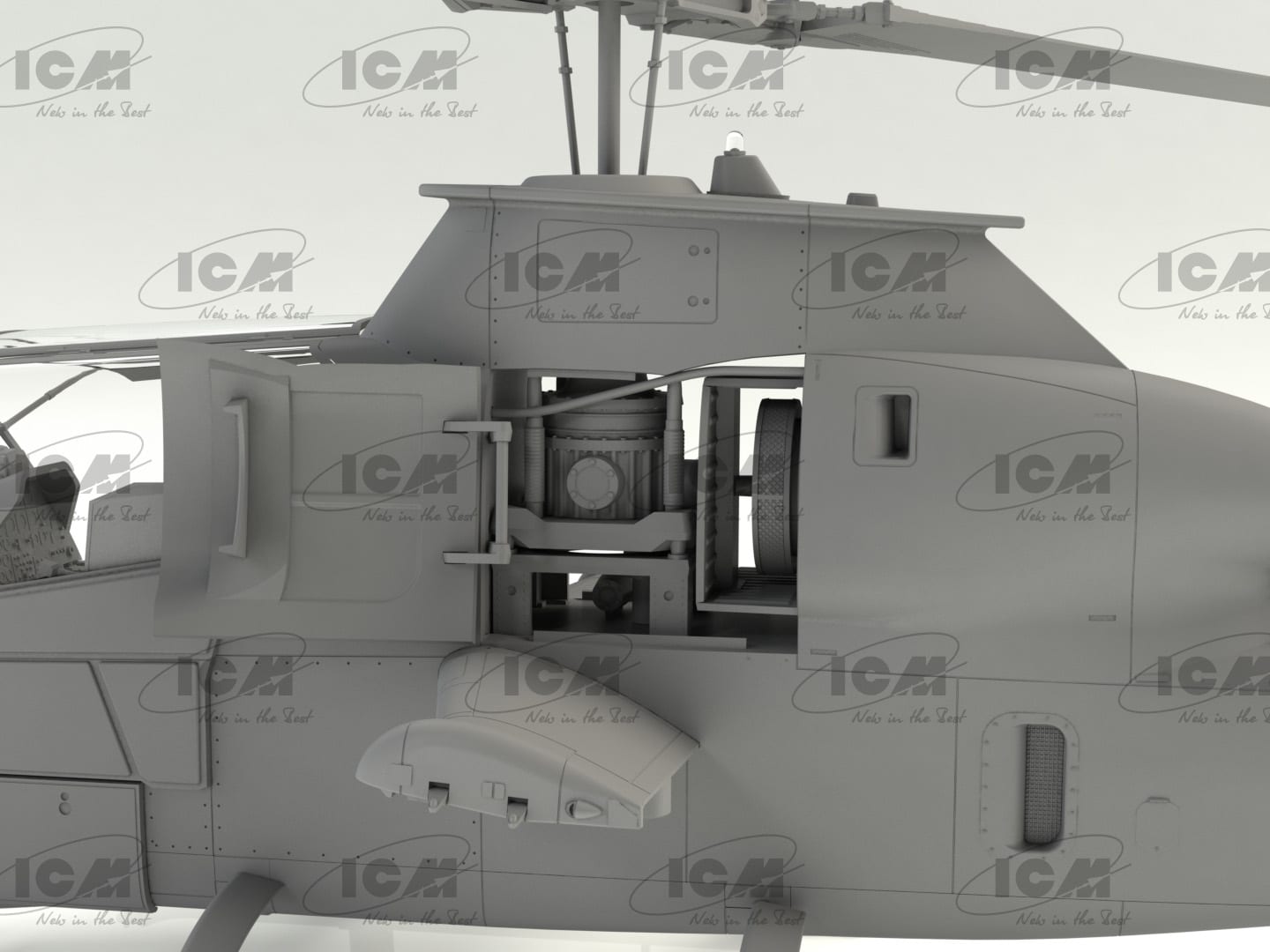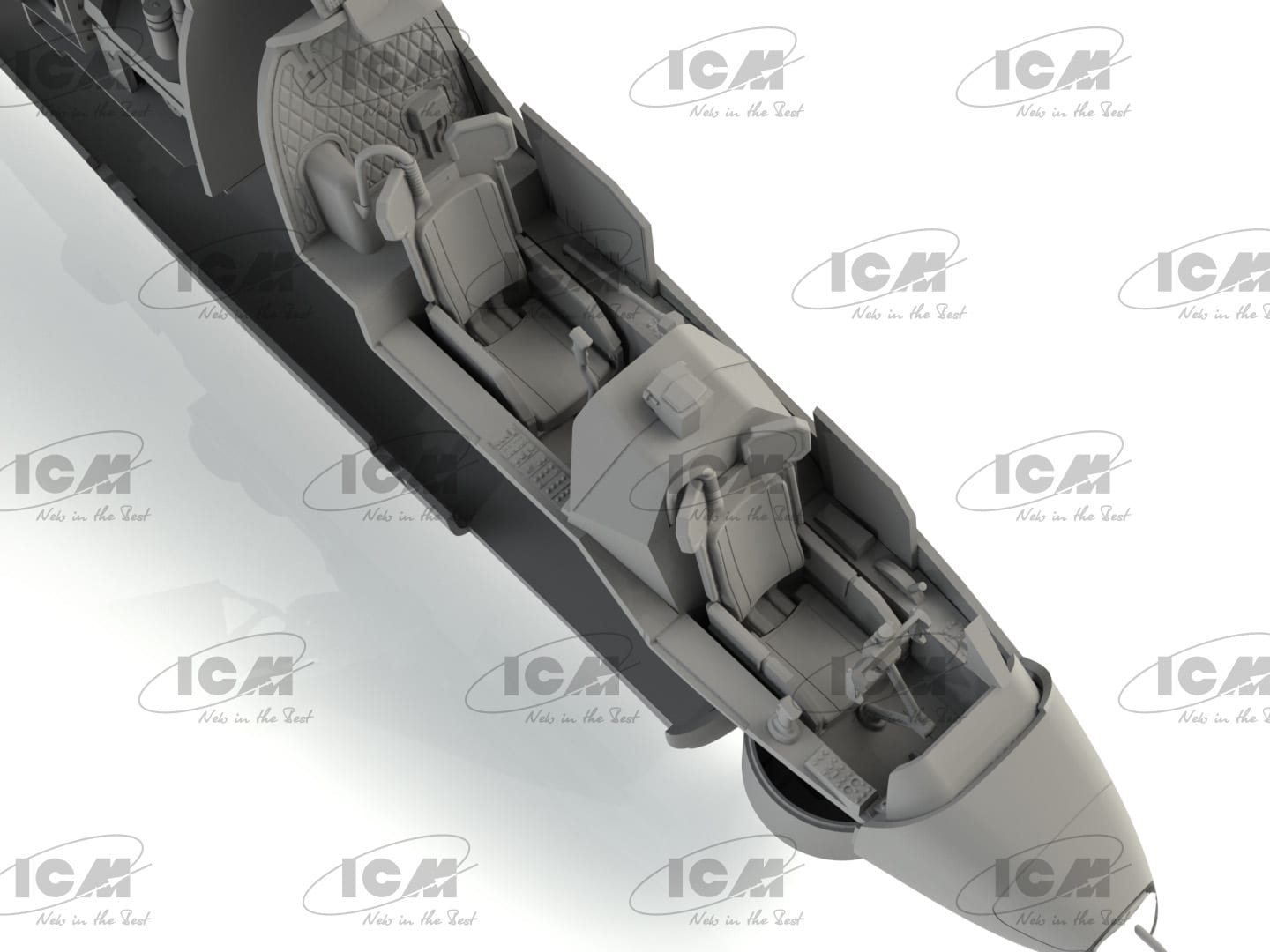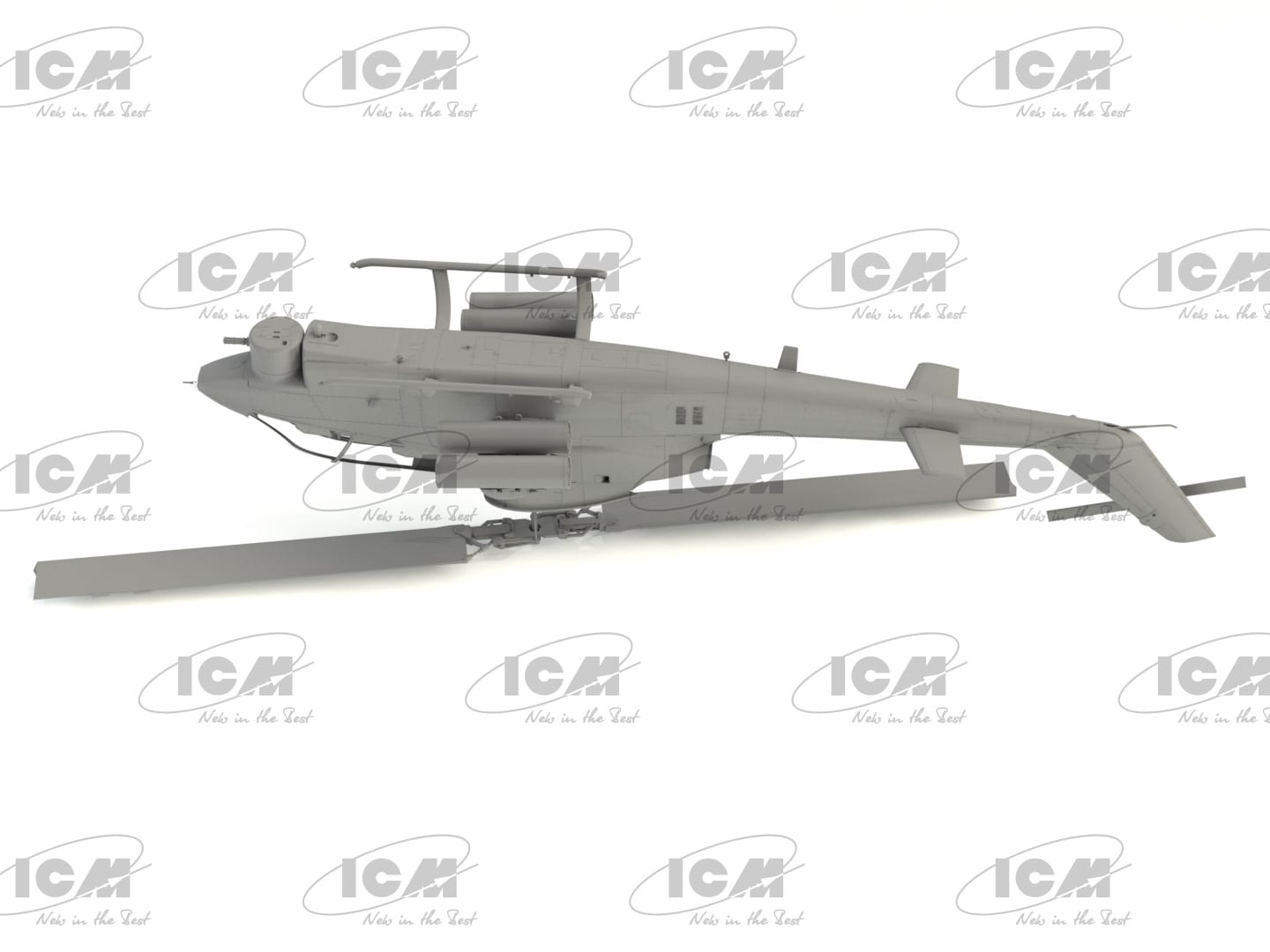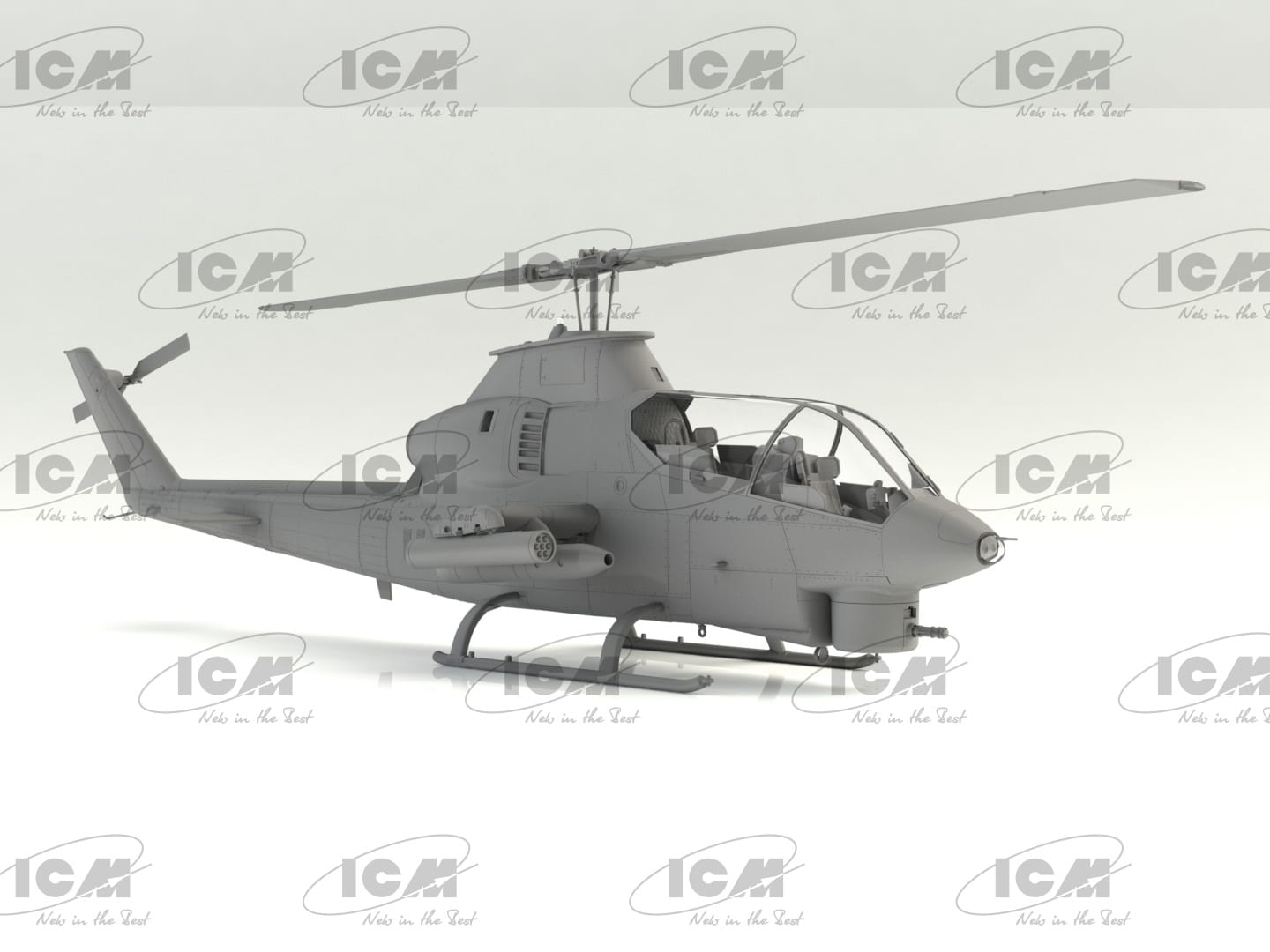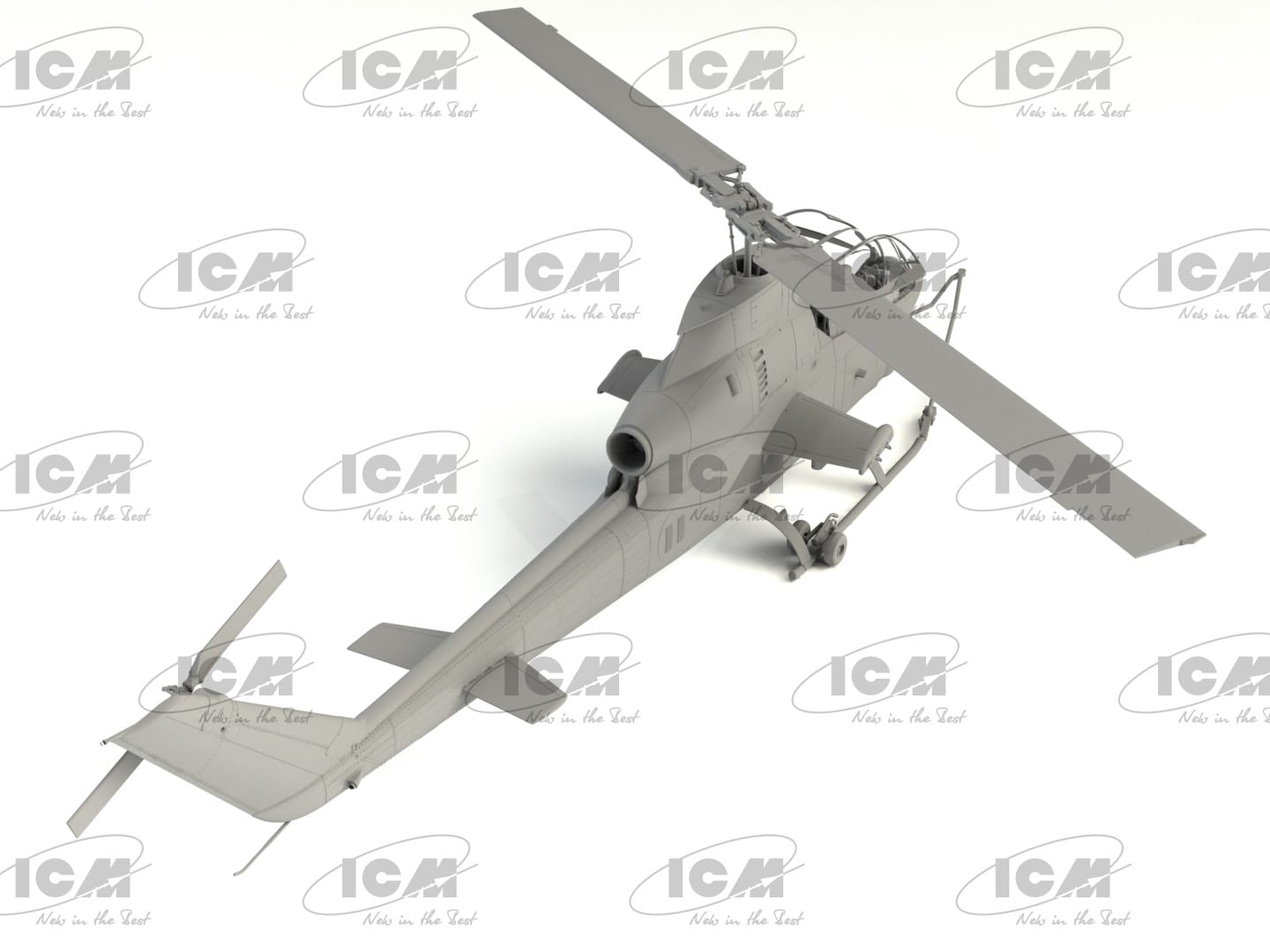AH-1G Cobra (early production), US Attack Helicopter (100% new molds) 1/32
44,37€
In stock

*Please check our Privacy Policies to see how to we use your personal data.
*Por favor revisa nuestra Política de Privacidad para ver como tratamos tus datos personales
In March 1965, Bell began development of a close air support combat helicopter based on the Model 204 (UH-1B/-1C Iroquois). The plan was to provide the U.S. Army with a test helicopter that would combine a new narrow fuselage with a small cross-section and tandem seating arrangement, power plant, main rotor and transmission of the UH-1C helicopter. Designated Model 209, it was tested beginning in December of the same year, with orders for two pre-production models and 110 production units following in April 1966.
Eventually designated the AH-1G and named the Huey Cobra, it began supplying to the U.S. Army in June 1967 and was used in combat operations in Vietnam in September. 1,127 AH-1Gs were delivered to the U.S. Army, including the TH-1G dual-control training helicopters.
The serial AH-1G helicopter, which became the base for further modifications, had a single-rotor design with a tail rotor, one GTE and a ski landing gear. The fuselage was all-metal, half-monocoque type. Cockpit is two-seat, with the shooter and pilot seats located one behind the other. The floor level in the gunner’s compartment (located in front of the pilot) is 0.25 m lower. The lantern with flat glasses minimizes glare and increases the space above the pilot’s head, the helicopter is equipped with an advanced autonomous system of emergency window and door dropping. Lightweight steel armor is used to protect the crew and the most critical areas of the structure and components from ground fire. Tail boom structure is reinforced to withstand 23-mm projectiles. The helicopter airframe is painted to reduce the visual and infrared signature.
SCALE
1:32
TIME PERIOD
After 1950
MARKINGS
AH-1G Cobra (early production), 5728 /47“Blue Max”2nd Battalion, 20th Artillery Regiment (Aerial Rocket Artillery, ARA)
АН-1 G Cobra (early production), 66-15252 / 15 presumably Cobra NETT
АН-1 G Cobra (early production), 66-15310, В Battery, 2nd Battalion, 20th Artillery Regiment (Aerial Rocket Artillery, ARA), 1 st Cavalry Division (Airmobile). Originally assigned to the Cobra New Equipment Training Team (Cobra NETT), 1967
АН-1 G Cobra (early production), 67-157621 Executioner, 235th AC, Capt Lou Bouault (aircraft commander), Daub Ting, November 1969
MODEL SIZE (LENGTH X WIDTH)
422 x 106 mm
BOX SIZE
410 x 260 x 100 mm
NUMBER OF DETAILS
226
En marzo de 1965, Bell comenzó a desarrollar un helicóptero de combate de apoyo aéreo cercano basado en el Modelo 204 (UH-1B / -1C Iroquois). El plan era proporcionar al Ejército de los EE. UU. Un helicóptero de prueba que combinaría un nuevo fuselaje estrecho con una sección transversal pequeña y una disposición de asientos en tándem, planta de energía, rotor principal y transmisión del helicóptero UH-1C. Designado Modelo 209, se probó a partir de diciembre del mismo año, con pedidos de dos modelos de preproducción y 110 unidades de producción en abril de 1966.
Finalmente, designado AH-1G y llamado Huey Cobra, comenzó a suministrar al Ejército de los EE. UU. En junio de 1967 y se usó en operaciones de combate en Vietnam en septiembre. Se entregaron 1.127 AH-1G al Ejército de los EE. UU., Incluidos los helicópteros de entrenamiento de control dual TH-1G.
El helicóptero en serie AH-1G, que se convirtió en la base para modificaciones adicionales, tenía un diseño de un solo rotor con un rotor de cola, un GTE y un tren de aterrizaje de esquí. El fuselaje era de tipo semimonocasco totalmente metálico. La cabina es de dos asientos, con los asientos del tirador y del piloto ubicados uno detrás del otro. El nivel del piso en el compartimiento del artillero (ubicado frente al piloto) es 0.25 m más bajo. La linterna con vidrios planos minimiza el deslumbramiento y aumenta el espacio sobre la cabeza del piloto, el helicóptero está equipado con un avanzado sistema autónomo de apertura de ventanas y puertas de emergencia. Se utiliza una armadura de acero liviano para proteger a la tripulación y las áreas más críticas de la estructura y los componentes del fuego terrestre. La estructura de la pluma de cola está reforzada para soportar proyectiles de 23 mm. La estructura del helicóptero está pintada para reducir la firma visual e infrarroja.
ESCALA
1:32
PERIODO DE TIEMPO
Después de 1950
MARCAS
AH-1G Cobra (producción inicial), 5728/47 “Blue Max” 2. ° Batallón, 20. ° Regimiento de Artillería (Artillería de cohetes aéreos, ARA)
АН-1 G Cobra (producción temprana), 66-15252 / 15 presumiblemente Cobra NETT
АН-1 G Cobra (producción temprana), 66-15310, В Battery, 2. ° Batallón, 20. ° Regimiento de Artillería (Artillería de cohetes aéreos, ARA), 1. ° División de caballería (Aeromóvil). Asignado originalmente al equipo de entrenamiento de equipos nuevos de Cobra (Cobra NETT), 1967
АН-1 G Cobra (producción inicial), 67-157621 Verdugo, 235a AC, Capitán Lou Bouault (comandante de la aeronave), Daub Ting, noviembre de 1969
TAMAÑO DEL MODELO (LARGO X ANCHO)
422 x 106 mm
TAMAÑO DE CAJA
410 x 260 x 100 mm
NÚMERO DE DETALLES
226



